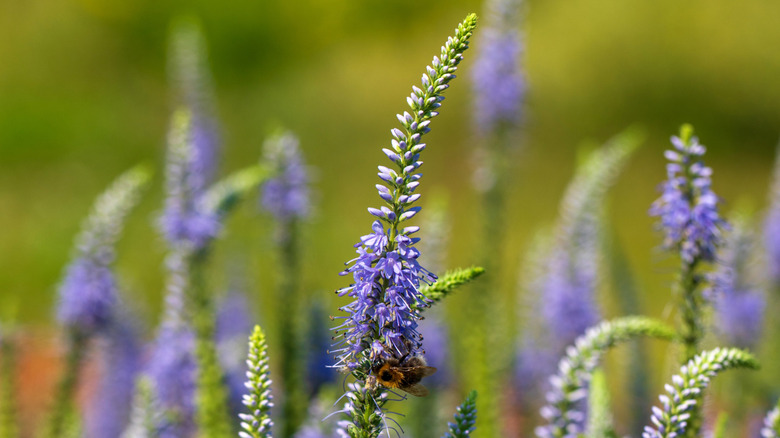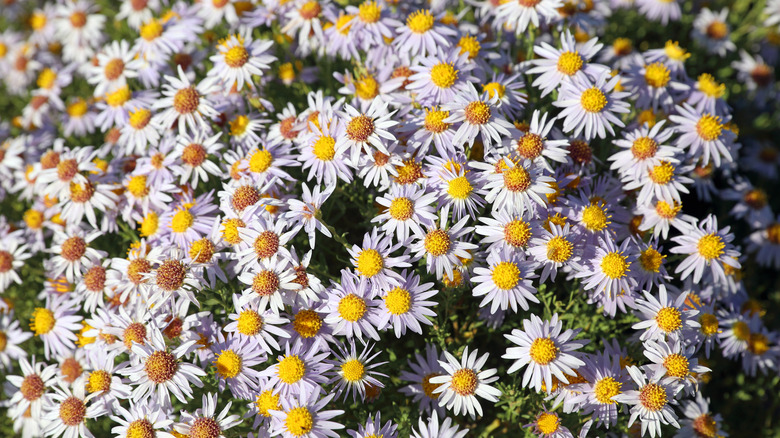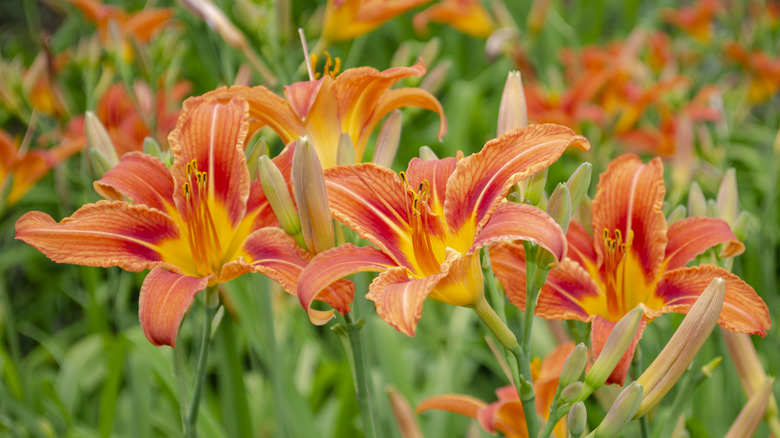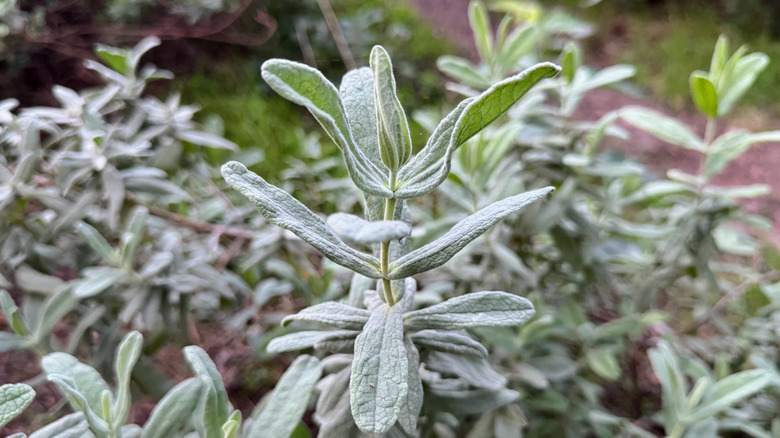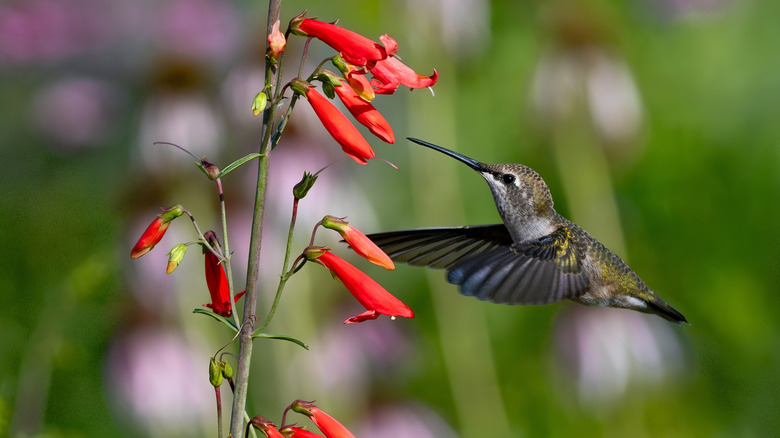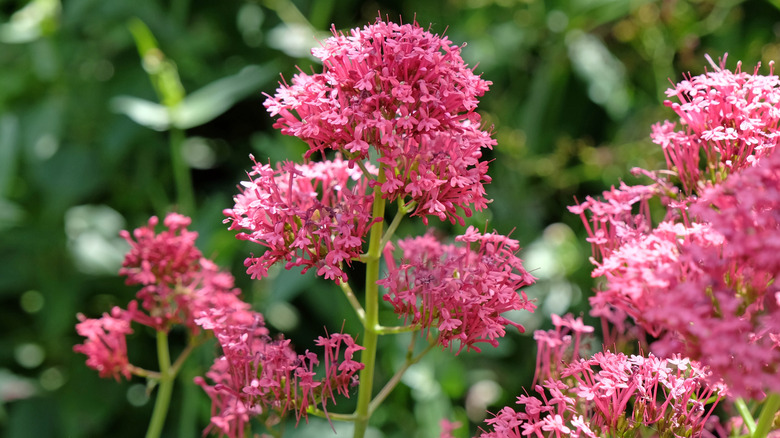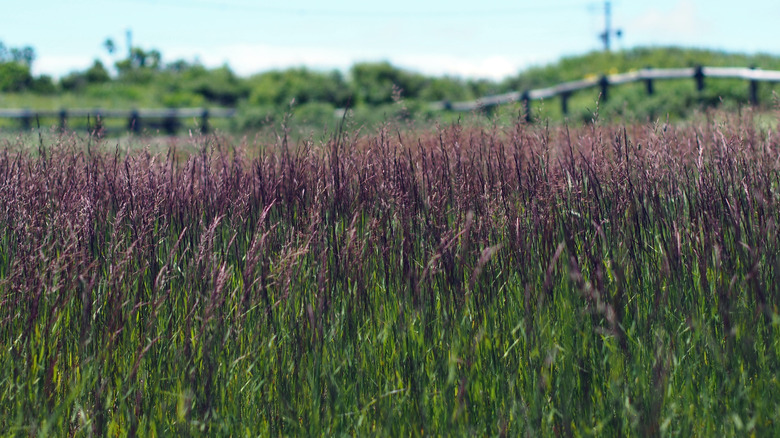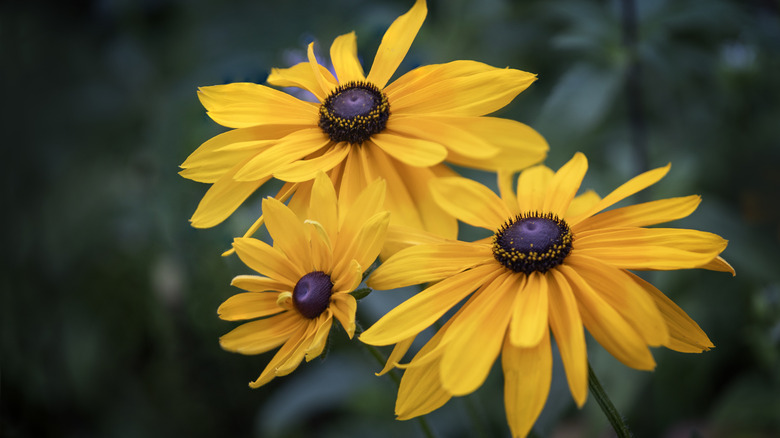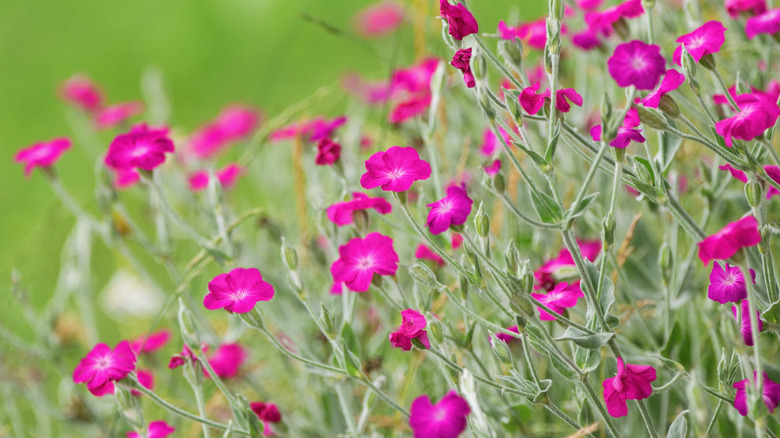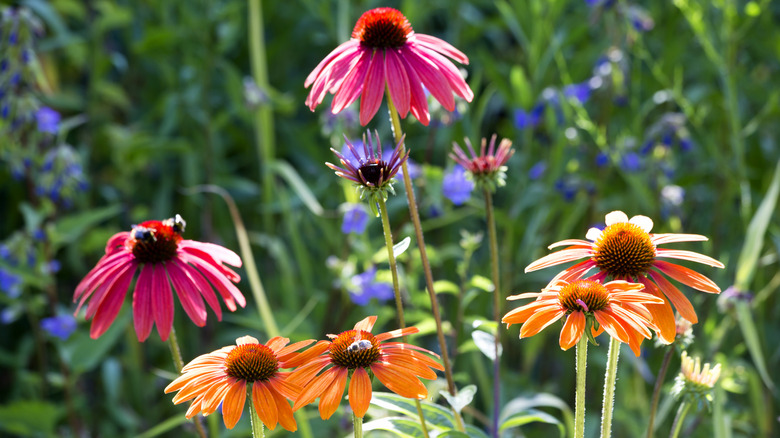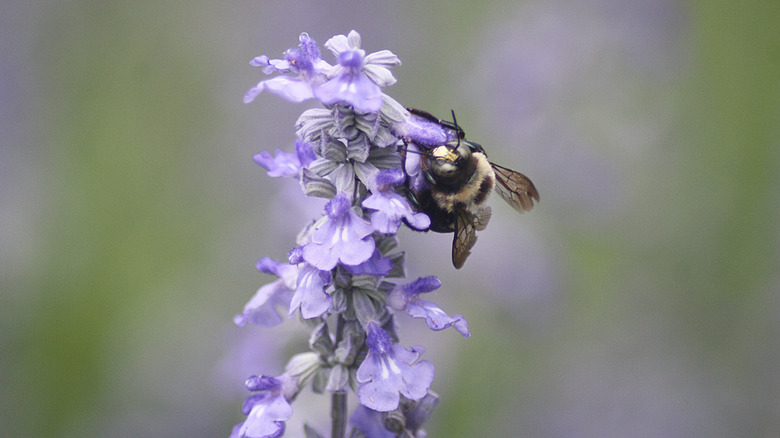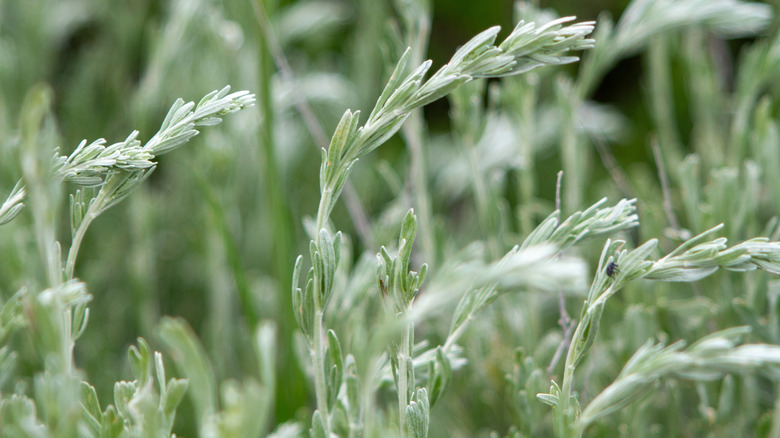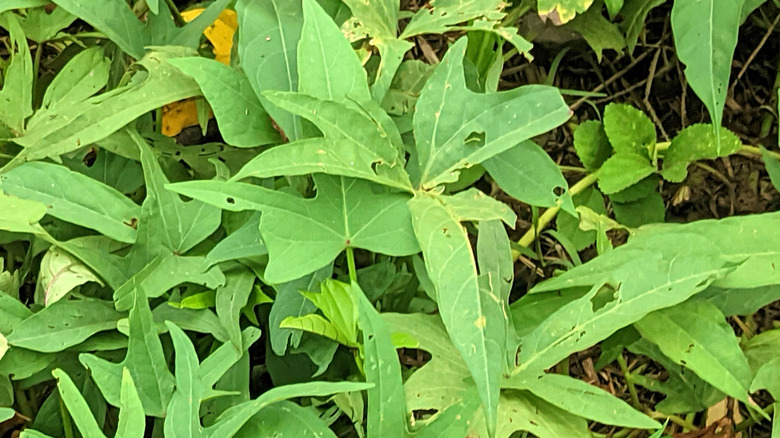12 Companion Plants That Can Take The Summer Heat Alongside Veronica
We may receive a commission on purchases made from links.
Whether you call it veronica, speedwell, or Veronica spicata, the intricate, spiraling petals of these purple and blue flowers make a welcome sight in any garden. Under the right circumstances in USDA hardiness zones 3 to 11, veronica requires very little maintenance. It doesn't ever need to be stowed away in the shade, and after the initial planting season, it only requires water in the most extreme conditions. This makes the plant a natural inclusion in hot, sunny gardens where it can grow with little to no outside help. But don't fret if you think the veronica will be out in the heat alone — there are plenty of options out there that make resilient and heat-tolerant companions to veronica.
The most important thing to consider when choosing a companion plant for any flower is whether it can thrive in the same environment. When it comes to figuring out the aesthetics of how you arrange any new plants, there aren't many hard and fast rules. You could play with color by either choosing blooms in the same hue or completely contrasting shades; you could install plants that are much taller or shorter than veronica to create some textural interest; or, just choose the plants you like the best. From lamb's ear to coneflowers and more, there are plenty of veronica companion plants that can thrive and elevate your summer garden.
Boltonia
Boltonia asteroides, or false aster, begins blooming at the end of the summer. Also known as Boltonia, these delightful little flowers prefer full sun and moist, rich soil and are hardy in zones 3 to 10. Boltonia can grow to be 5 feet tall, making it an excellent backdrop for the slightly shorter veronica. Plus, the former's daisy-like, pastel white and pink petals provide a nice contrast against the latter's richer hues. After being planted for a season, this pretty plant becomes drought-tolerant and can withstand dry and humid heat.
Daylily
Daylilies, which include flowers in the Hemerocallis species, are known for their vibrant blooms and resistance to the elements. Thriving in zones 4 to 9, they flourish in full sun and a variety of soil types. These perennials are drought-tolerant once established, making them an ideal companion for veronica in hot, sunny gardens. There are many types of daylilies with different blooming periods, so it's possible for pro gardeners to extend the amount of time daylilies are on display. Cultivars like 'Little Grapette' bloom at the end of spring, while 'Wind Frills' have green leaves throughout the winter.
Lamb's ear
Stachys byzantina, commonly called lamb's ear, has unique, velvety leaves that can appear pale green, silver, or even purplish, making it a beautiful addition to veronica-filled garden plots. Plus, the plant's soft leaves would be an interesting contrast next to veronica's spiky foliage. Despite its delicate appearance, lamb's ear is very hardy throughout zones 4 to 9 and especially thrives in dry conditions. Be it low-quality soil or drought, lamb's ear can thrive as ground cover or planted as a garden border. In fact, lamb's ear can also make a great grass alternative for your lawn.
Firecracker penstemon
With its cylindrical red flowers, firecracker penstemon (Penstemon eatonii) can bring a unique burst of color to any garden. This plant thrives in full sun and is hardy in zones 4 to 8. Firecracker penstemon is a desert flower, so there's no need to worry about ever underwatering or leaving it in the sun too long. These tough flowers can grow excellently alongside veronica, where their tall, reedy stalks adorned by crimson blooms will create a visual treat next to the cool-toned veronica.
Red valerian
Red valerian (Centranthus ruber) prefers full, direct sunlight, sandy soil, and minimal water in hardiness zones 5 to 8. Even if you have very low-quality soil, red valerian can still thrive, which makes it a resilient companion for veronica. As you might expect, these flowers come in a range of red shades that will enhance cool-toned veronica flowers. Valerian generally doesn't require much maintenance, but you can improve how it flowers by pruning it with a sharp pair of garden clippers like the Fiskars Bypass Pruning Shears.
Purple moor grass
Purple moor grass (Molinia caerulea subsp. arundinacea) is made special by its graceful, arching foliage and fluffy, flowery ends. This flowing grass is suitable in hardiness zones 5 to 9, where it will add lots of texture to gardens filled with otherwise static flowers. It requires well-draining soil, lots of sun, and just enough water to keep it from completely drying out. Purple moor grass has subtle shades of violet that will look enchanting next to the deep violets and blues of veronica flowers.
Black-eyed Susan
Black-eyed Susan is a cheerful perennial known for its bright yellow petals and dark brown centers. These iconic flowers, also called Rudbeckia, are hardy in zones 3 to 9 and need very little attention once they've been established. Resistant to a range of harsh conditions, including high heat and drought, tall-growing black-eyed Susans will make a lovely companion to veronica and dozens of other sun-loving wildflowers. If you've been convinced, don't forget to read up on everything you need to know about planting black-eyed Susan.
Rose campion
Lychnis coronaria, or rose campion, is a pretty perennial from stem to petal. Rose campion is drought-resistant and hardy in zones 3 to 8. It requires minimal maintenance once it has been properly established. These flowers not only have eye-catching magenta blooms but also leaves and foliage that look like they've been dusted with silver — a perfect aesthetic match for bold, brightly colored veronica. As long as they get plenty of sun and are grown in well-draining soil, heat-loving rose campion makes an attractive and hassle-free companion to veronica.
Coneflowers
Another wildflower that enjoys lots of sun and little water is Echinacea purpurea, or coneflower. Notable for their unmistakable cone shape with an orangish-brown button center and thin petals, coneflowers are hardy throughout zones 3 to 8 and can be grown in a range of soil types. A tall-growing plant, coneflower is perfect for borders or adding bits of visual interest to a yard, and its bright, colorful petals will contrast nicely with veronica. There are also dozens of stunning varieties of coneflower, so there are plenty of opportunities to customize the color in your garden.
Sage
The Salvia genus, or sage, encompasses a diverse group of plants, including pineapple sage (Salvia elegans) and common sage (Salvia officinalis). Sage plants are most widely known for their aromatic foliage and colorful flowers, and can be found growing strong in zones 5 to 10. Blooming in all seasons except winter, sage can take a lot of sun, heat, and drought. The upright, pointy purple, blue, and pink blooms of sage make a lovely complement to veronica, where the two can grow unwaveringly together.
Artemisia
Known for its finely cut, silver-gray foliage, artemisia (Artemisia spp.) can give garden plans a softer edge. There are hundreds of different types of artemisia, with most grown in zones 4 to 8 under direct, full sunlight. Artemisia loves dry conditions — it does best in dry soil and will practically never need to be watered after the first season. Along with being extremely heat-friendly and drought-tolerant, the muted tones make it a striking companion for veronica. Some types of artemisia are invasive and should not be planted, so take care to opt for a non-invasive cultivar like Louisiana sagebrush (A. ludoviciana).
Sweetpotato vine
The heat-tolerant qualities of the sweetpotato vine (Ipomoea batatas) make it a classic in gardens throughout hardiness zones 9 to 11. While the vine does produce flowers, it is most beloved for its vibrant foliage, available in lime green or deep purple. This annual can serve as the perfect ground cover and only needs full sun, rich soil, and occasional watering to flourish. Sweetpotato vine leaves can create a lovely base for veronica to stand out from, and it makes for a sturdy plant even in colder climates.
